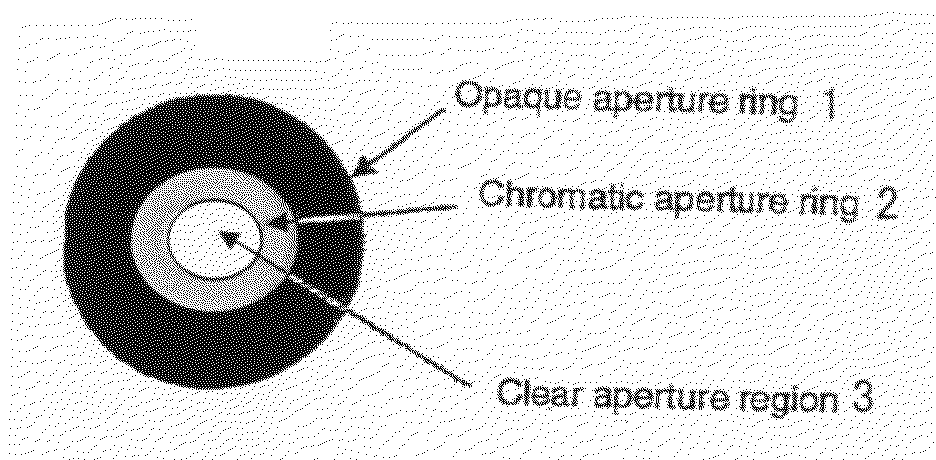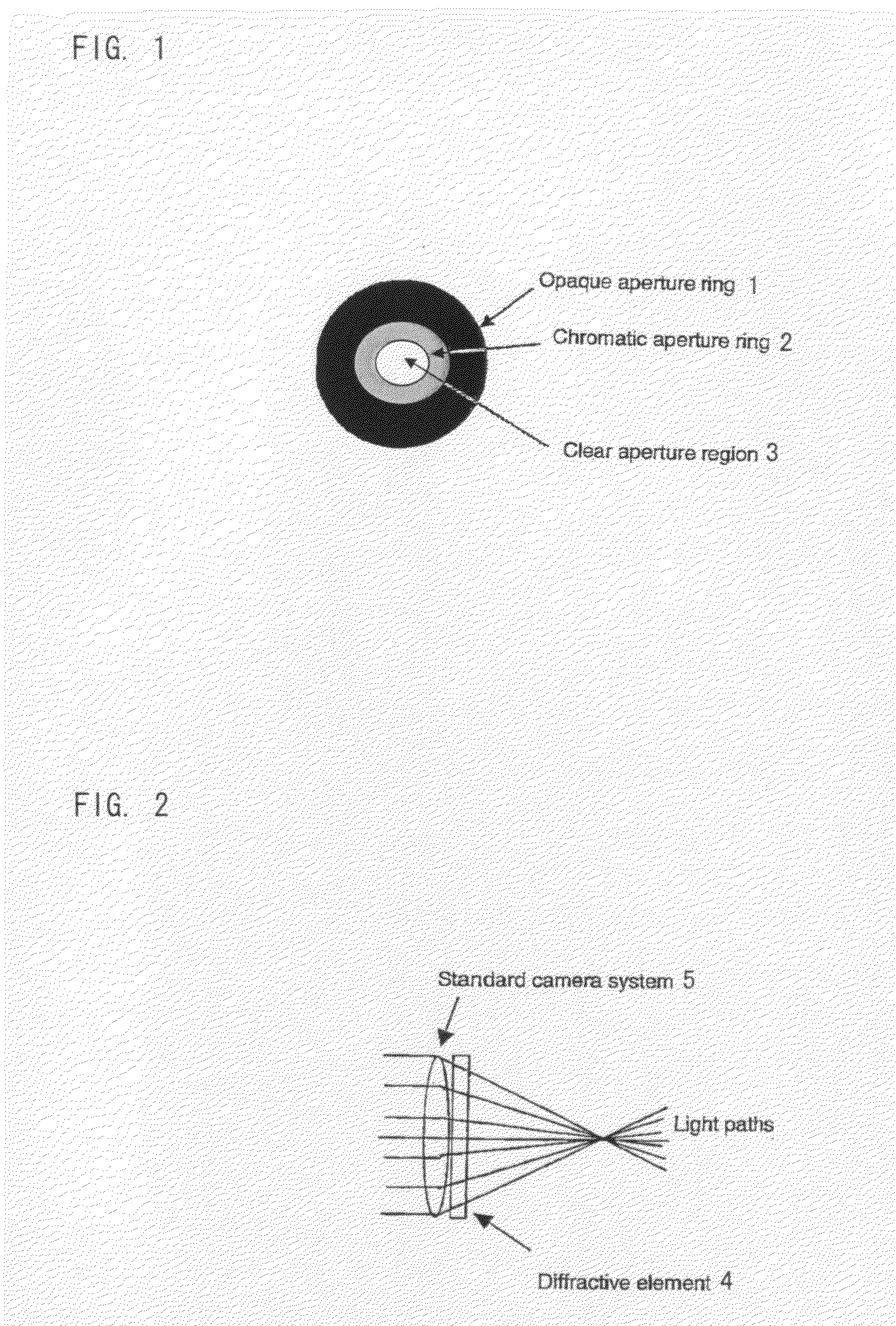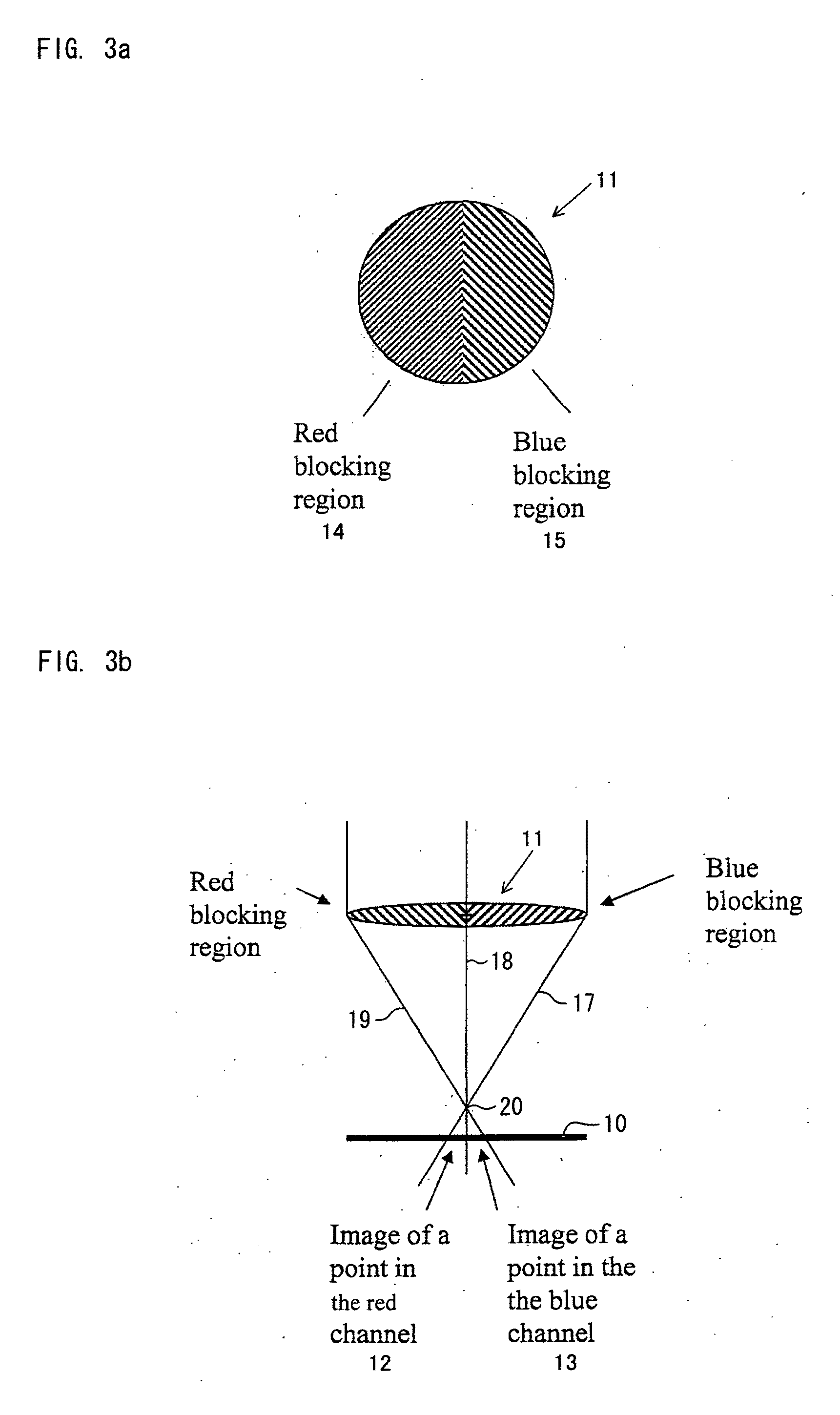Camera and imaging system
- Summary
- Abstract
- Description
- Claims
- Application Information
AI Technical Summary
Benefits of technology
Problems solved by technology
Method used
Image
Examples
embodiment 1
[0088]FIG. 1 is a diagram of embodiment 1. In this embodiment, a chromatic aperture is used to make the aperture of the lens smaller for the blue channel and therefore increase the depth of field in the blue channel. The sharpness of the blue channel is then transposed from the blue channel to the other colour channels by image processing. The gain of the blue channel is increased to compensate for the reduced light input in the blue channel.
[0089]The camera thus has an imaging system with a first depth of field for at least one first frequency of optical radiation, such as at least one first frequency band (blue) and a second smaller depth of field for at least one second frequency of optical radiation, such as at least one second frequency band (red and green).
embodiment 2
[0090]FIG. 2 is a diagram of embodiment 2. The camera system contains an extra diffractive element 4 that only operates on one colour channel. The diffractive element acts as a wavecoding element and is designed to create a wavecoding effect as known in the prior art. That is to say, the element 4 creates a uniform blur of objects over a wide range of distances such that the blur can be reversed, after the image is recorded, by image processing. The diffractive element 4 may be made to operate for only one colour channel by making it from an amplitude mask that is made from a colour filter material. For example, if a yellow colour filter is used, the diffractive element is substantially invisible to red and green light whilst still effective for blue light.
[0091]In this way, the camera lens operates as a standard lens for red and green channels, thereby giving excellent image quality at medium and far distances because only the blue channel suffers image processing. For the near dis...
embodiment 3
[0092]The technique disclosed in “Image and Depth from a Conventional Camera with a Coded Aperture”, by Levin et al, ACM SIGGRAPH 2007 papers, article No. 70, 2007, discloses a ‘coded aperture’, which is compatible with the concept of having one specific high depth of field colour channel. This paper describes the use of a coded aperture which is an aperture with a special pattern. This pattern blocks certain frequency components of the image in a depth-dependant way. By identifying which frequency components of the image are missing from the image, the distance of an object may be judged and therefore the level of blur from the camera lens may be judged and reversed by image processing. The coded aperture need not be made from black and clear components as stated in the paper, but, in this embodiment, the coded region may be made from a chromatic dye. This would enable the de-blurring to be carried out on one colour channel and, once this sharp colour channel is created, the sharpn...
PUM
 Login to View More
Login to View More Abstract
Description
Claims
Application Information
 Login to View More
Login to View More - R&D
- Intellectual Property
- Life Sciences
- Materials
- Tech Scout
- Unparalleled Data Quality
- Higher Quality Content
- 60% Fewer Hallucinations
Browse by: Latest US Patents, China's latest patents, Technical Efficacy Thesaurus, Application Domain, Technology Topic, Popular Technical Reports.
© 2025 PatSnap. All rights reserved.Legal|Privacy policy|Modern Slavery Act Transparency Statement|Sitemap|About US| Contact US: help@patsnap.com



